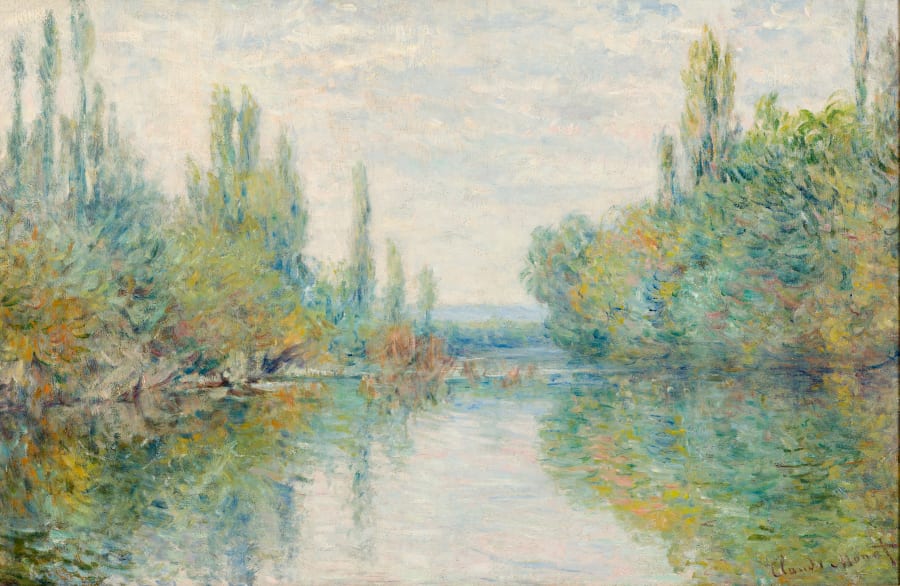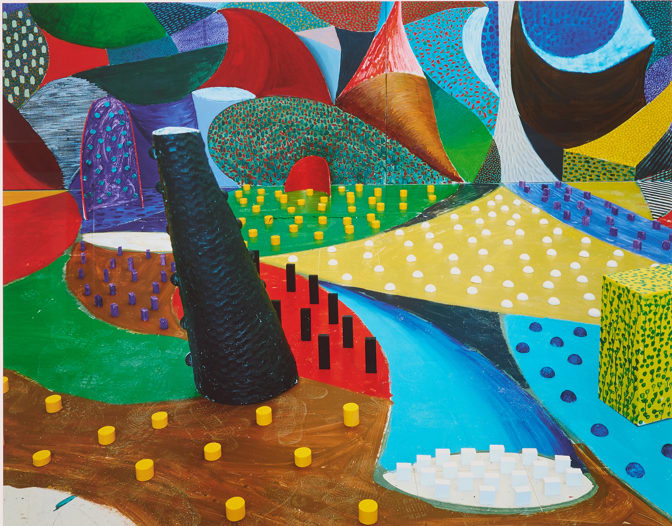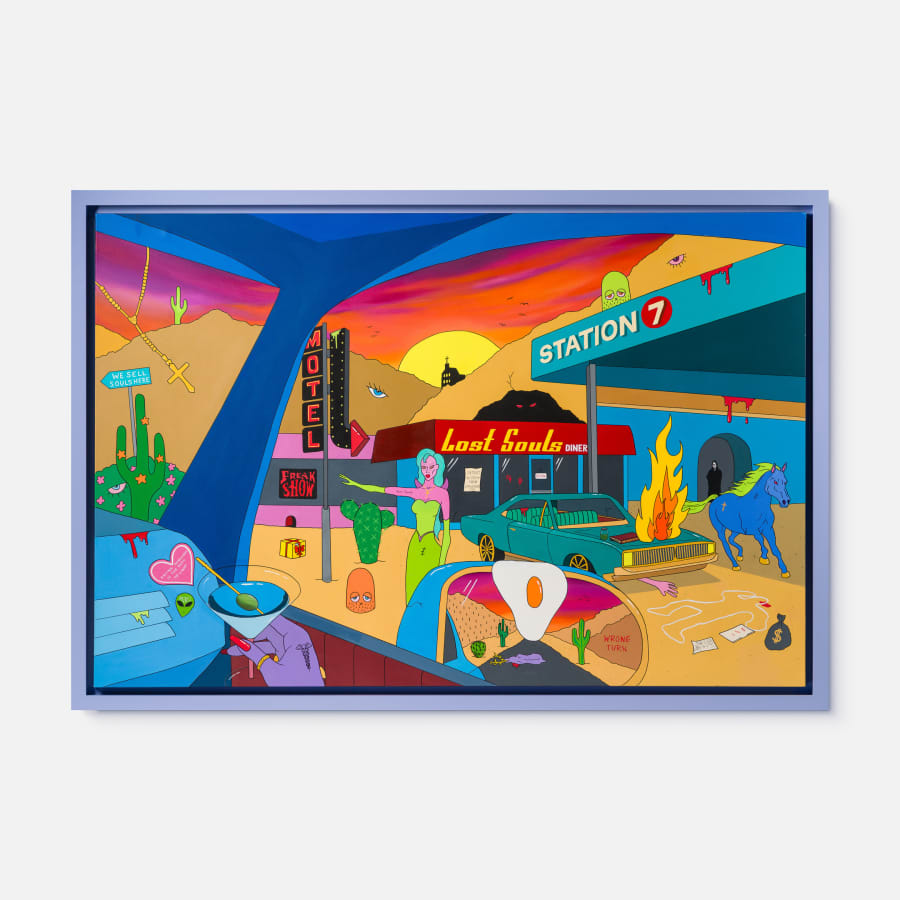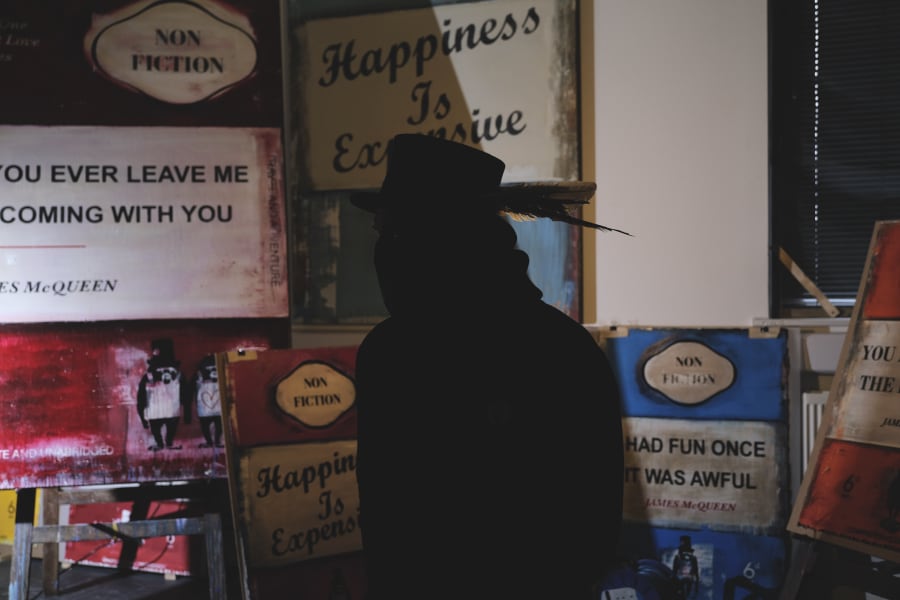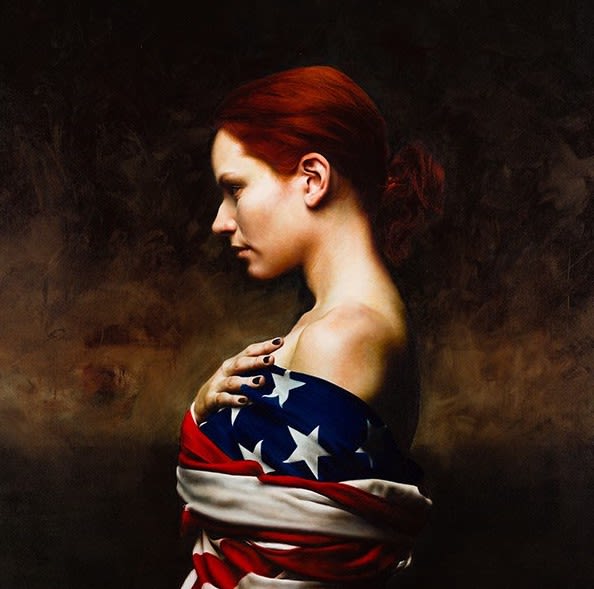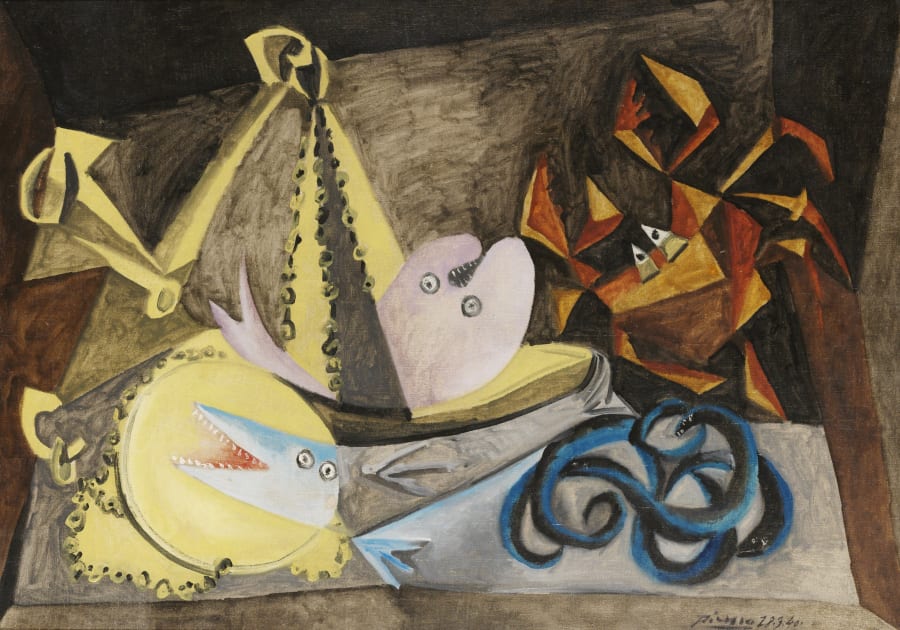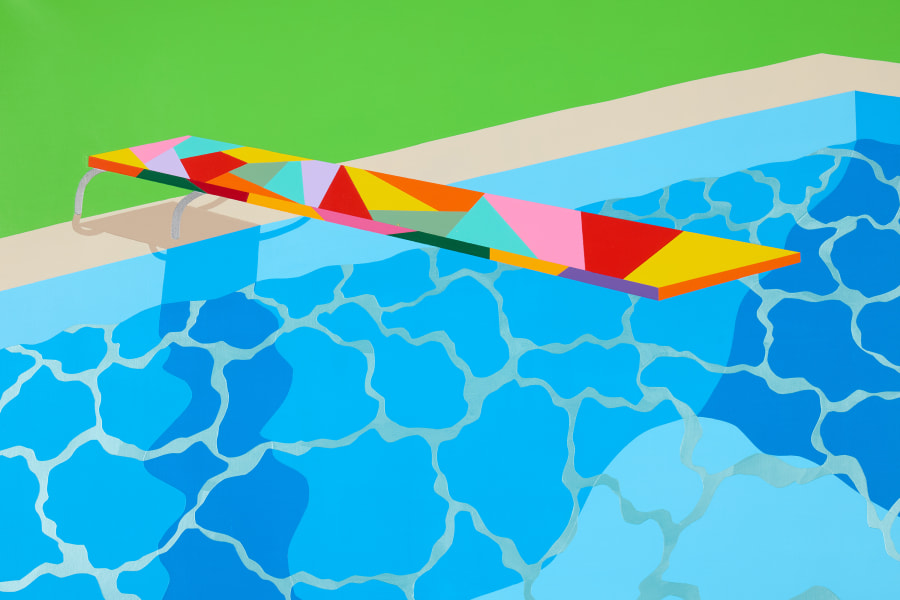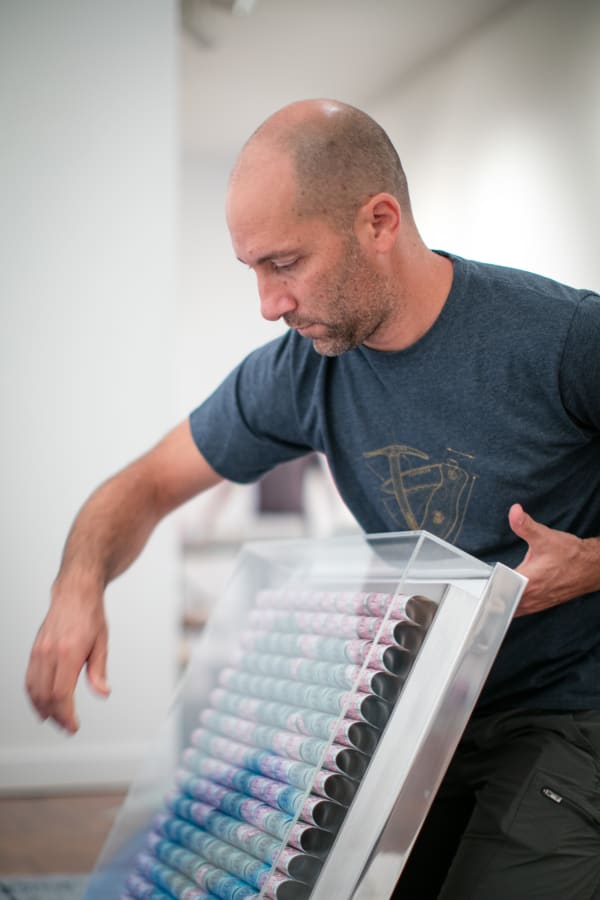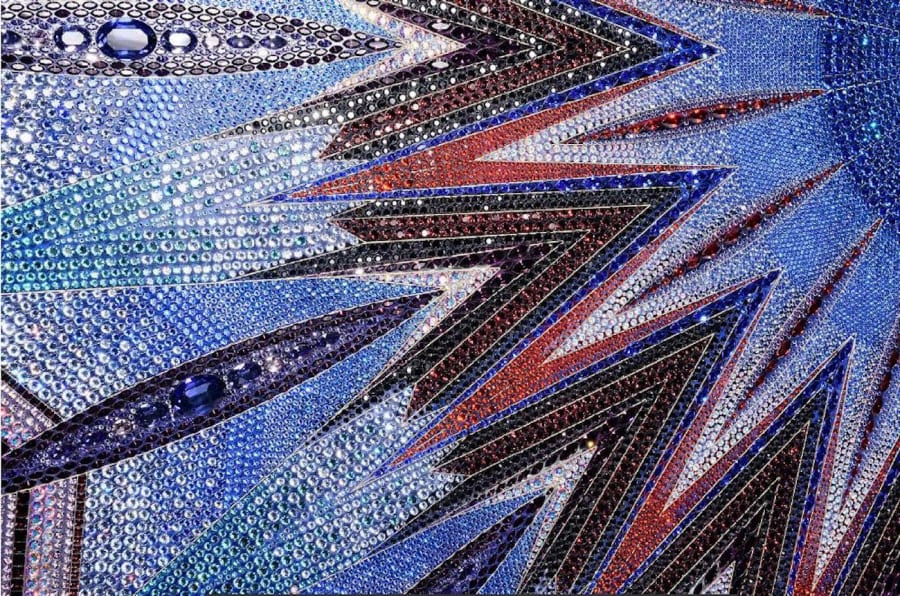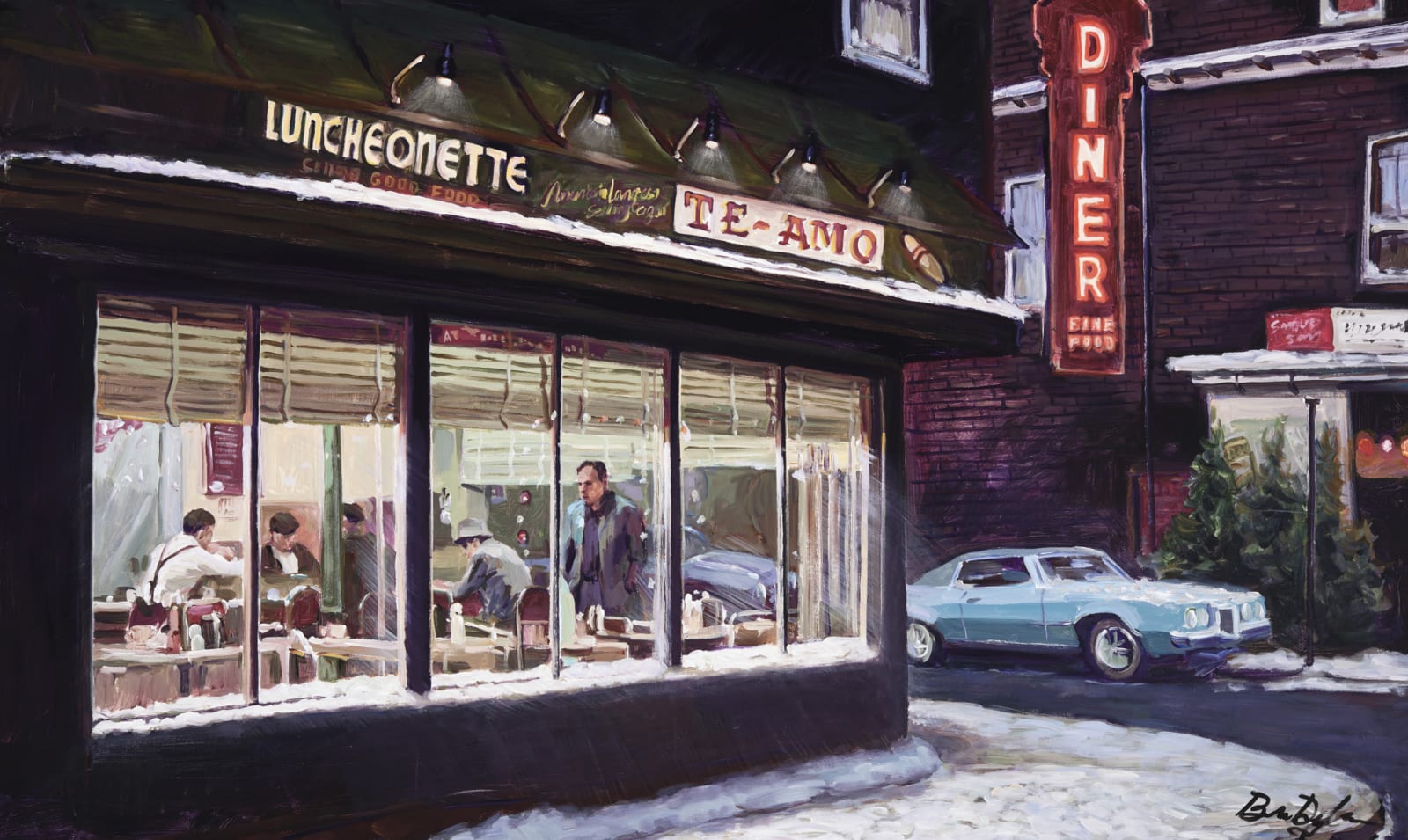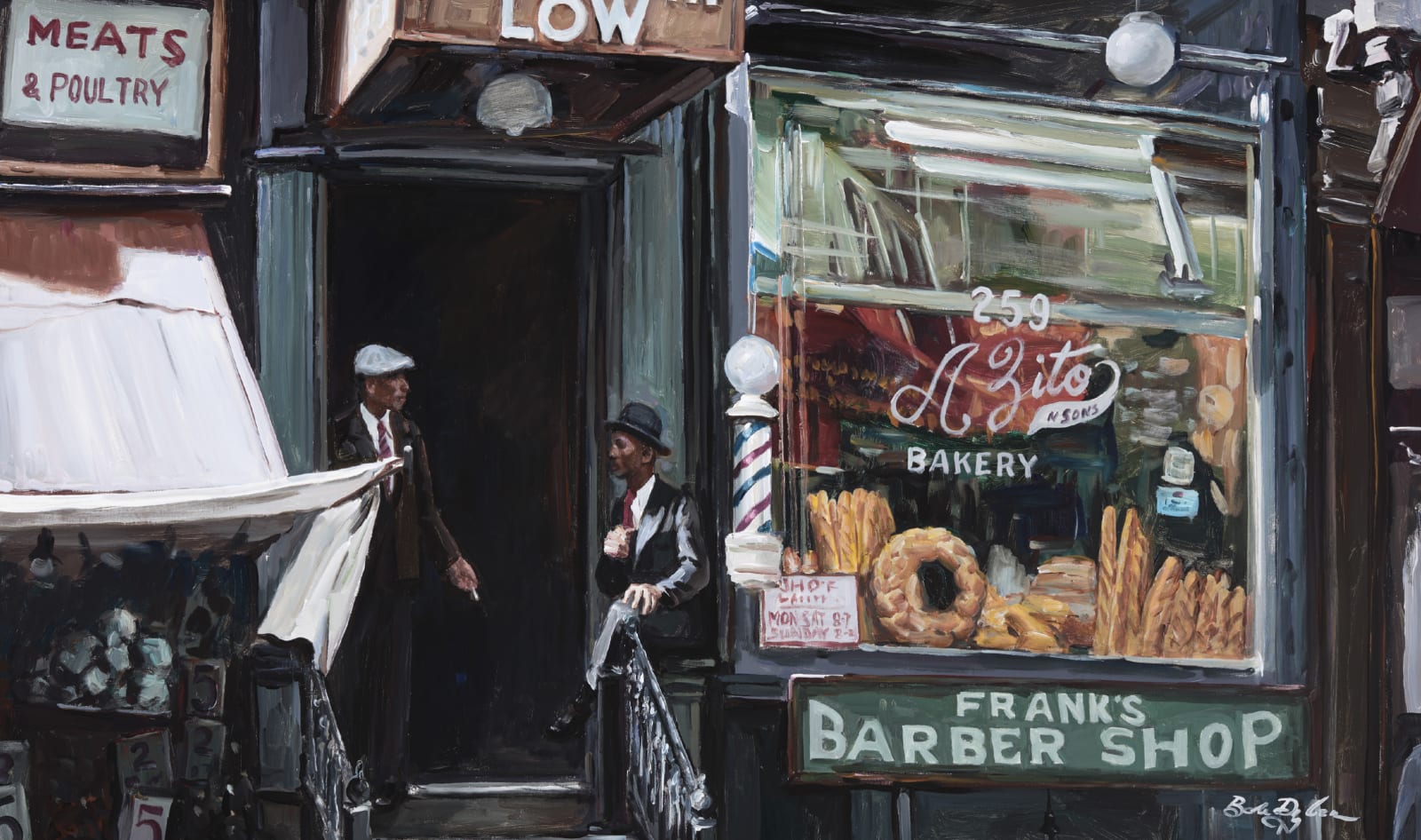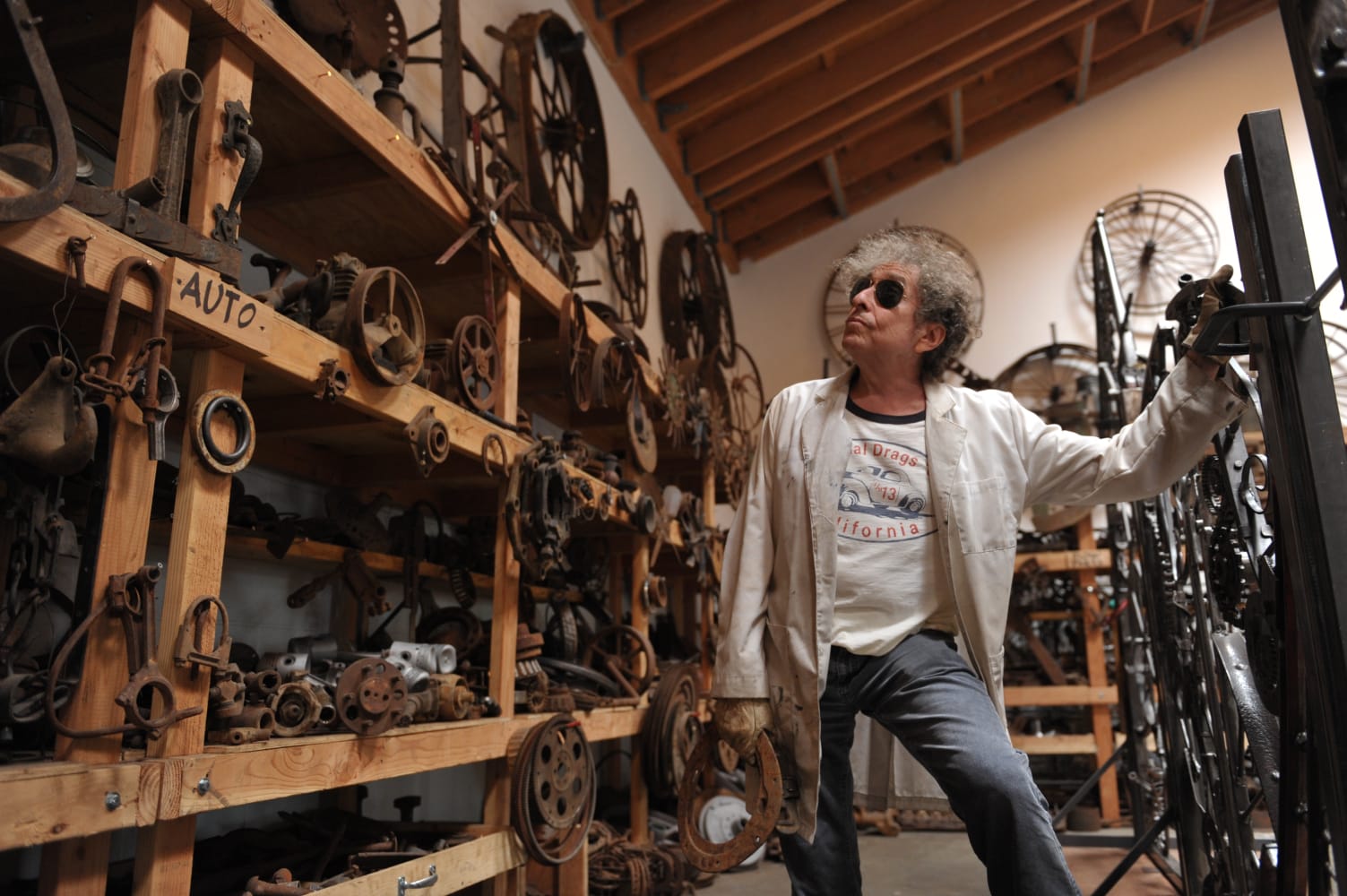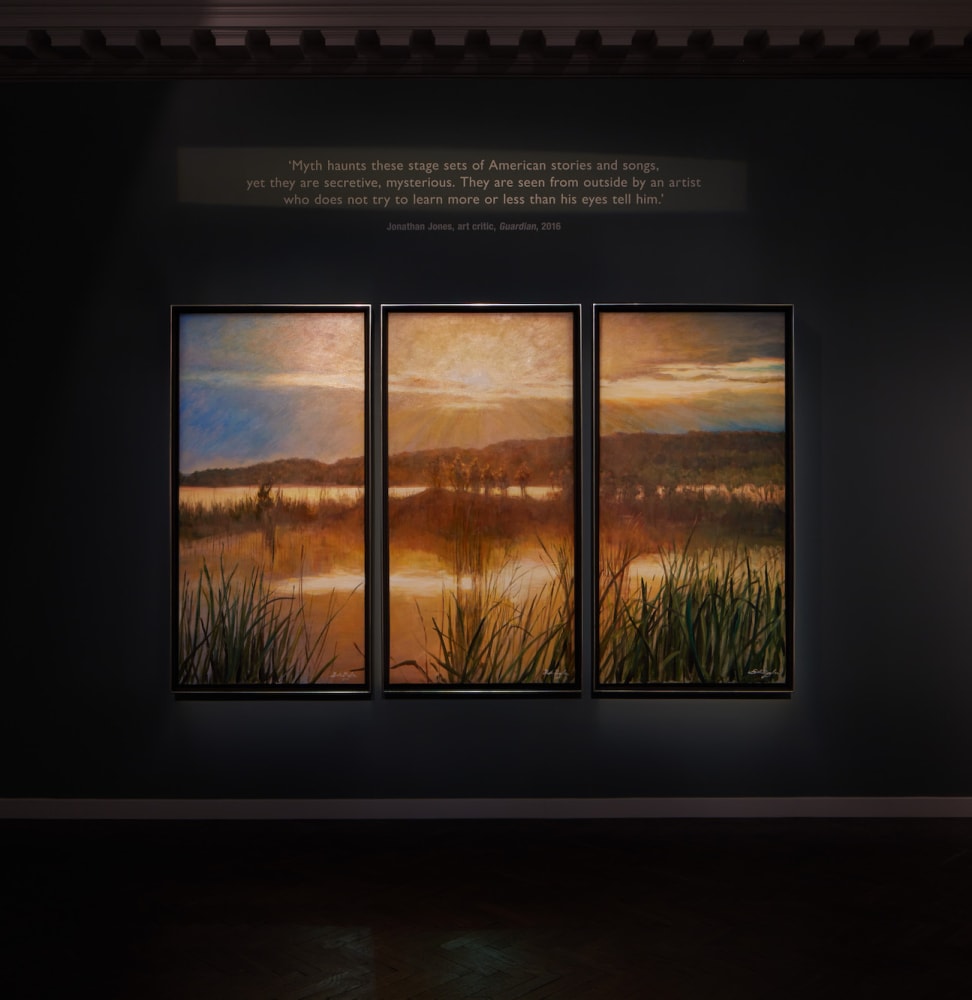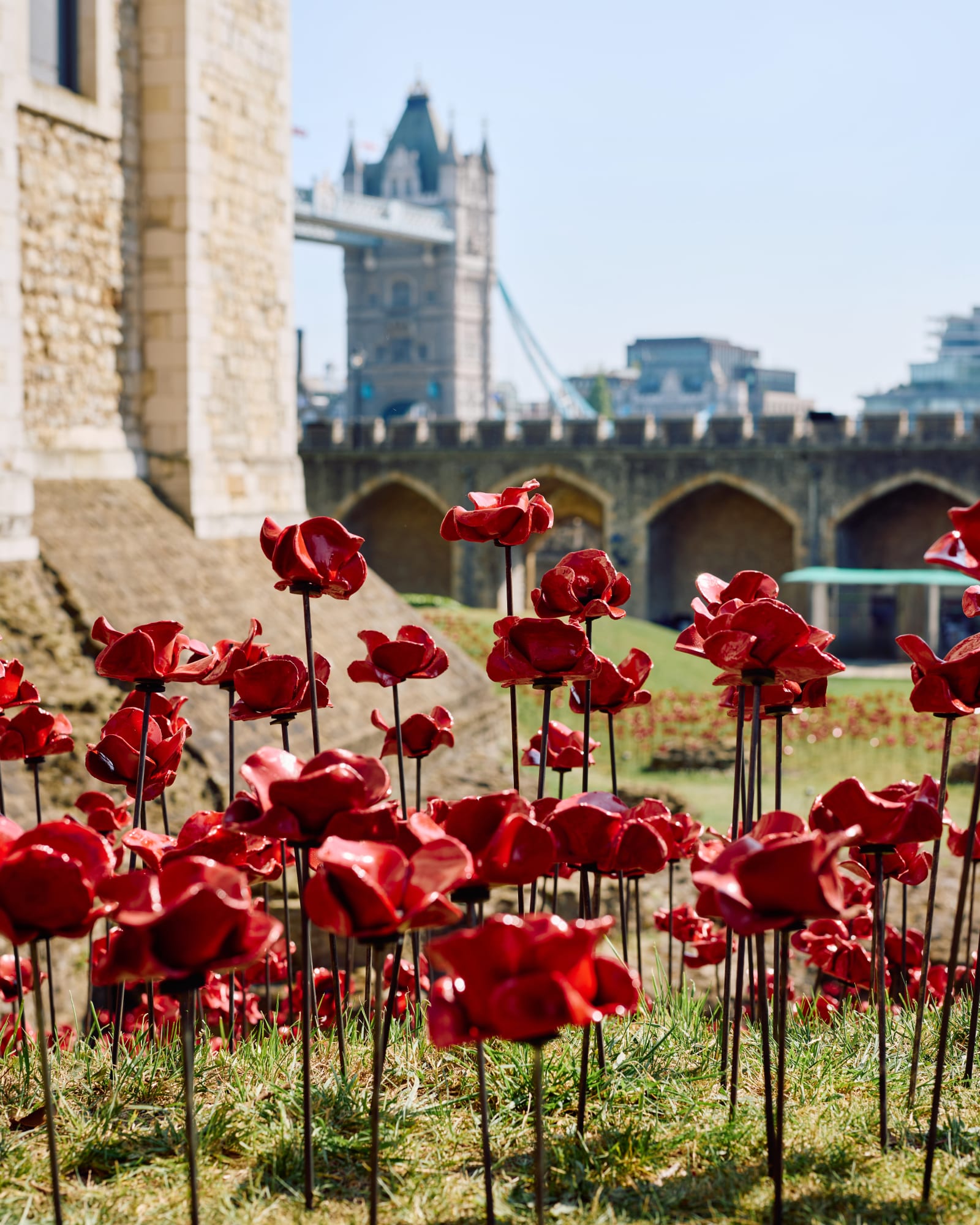

Paul Cummins’ Poppies Return to the Tower of London
Two days before the 80th anniversary of VE Day – which marks the formal surrender of Nazi Germany and the end of the Second World War in Europe –the Tower of London unveiled a new commemorative display featuring Paul Cummins’ iconic ceramic poppies. Following the groundbreaking success of Blood Swept Lands and Seas of Red – an installation of 888,246 ceramic poppies, originally devised by Paul Cummins in 2014 - this new installation will incorporate just under 30,000 poppies from the original installation. The new display officially opened on 6 May 2025 and will run through VJ Day on 15 August before closing on 11 November, in observance of Armistice Day (or Remembrance Sunday).
Halcyon is proud to play a significant role in such a memorable project and to support one of it's artists, Paul Cummins, in enabling the return of the poppies to the Tower of London.

New Poppy Display for 2025
On May 6th, Historic Royal Palaces returned the poppies to the Tower of London, 11 years after the renowned installation, Blood Swept Lands and Seas of Red appeared in the moat of the Tower of London.
In response to the new project, Tom O’Leary, Director of Public Engagement at Historic Royal Palaces, said:
'As the Second World War begins to pass out of living memory, it’s more important than ever that we come together to remember, share stories of the past, and reflect on the lasting legacy of conflict. We know that the 2014 display was a unique event in the Tower’s history that can never be repeated, but we wanted to play our part in marking this anniversary, and hope that by returning a small number of the original poppies to the Tower, we’ve found a fitting way to do that. We hope that the Tower of London can once again be a space for everyone to remember and reflect in the ways that mean most to them, during this important anniversary year.’
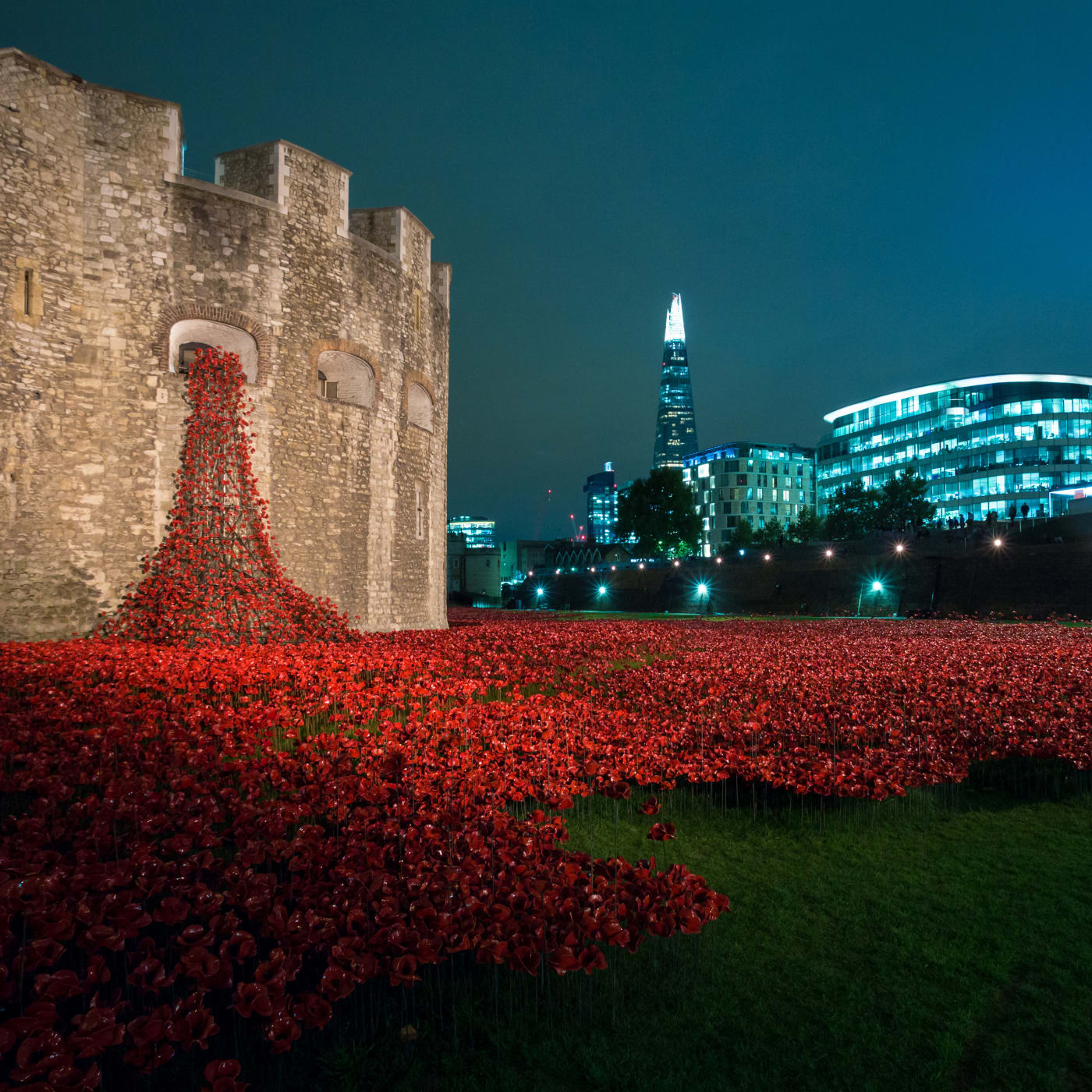
The Concept Behind Blood Swept Lands and Seas of Red
In 2014, the Tower of London hosted a major art installation, Blood Swept Lands and Seas of Red, which marked the centenary of the start of the First World War. As part of the installation, 888,246 ceramic poppies progressively filled the moat between 17 July and 11 November 2014. The installation was hailed as a monumental success, and five million people from countries across the word travelled to the Tower of London to see the poppies.
The concept behind the installation was devised by Chesterfield-born artist, Paul Cummins who took his idea to Historic Royal Palaces. Paul was inspired to produce a ceramic poppy to honour each military life lost at the Front during the First World War. The concept came to him after an encounter at his local library where he discovered a handwritten will from a widow who had lost her husband in the war, which resonated with him on a profound level. This chance moment led to the idea of using ceramic flowers as a representation of the loss and sacrifice. The striking display created was rooted in Cummins' proficiency in both ceramics and metalwork, alongside his passion for creating artworks that evoke emotional connections. Cummins approached several historic sites before finding the Tower of London as the perfect location for the installation. London-based designer, Tom Piper was then brought into the project to work with Paul on the design of the flowers within the moat. What began as a powerful visual artwork soon transformed into a collective performance. Hundreds of volunteers from around the world helped ‘plant’ the poppies in the Tower moat, creating an organic assembly. While there was a clear plan for the installation designed by Piper, the vast number of participants brought a sense of natural chaos.
Among the work were two separately titled installation pieces: Weeping Window and Wave. These sculptures were intended to make the work visible from further away, with Weeping Window cascading out of a Tower window, flowing down the building’s façade into the surrounding sea of poppies below. Wave took the form of a dramatic outpouring of poppies, creating a visual impact that was both overwhelming and deeply poignant.

Delicate Flowers Require Gentle Hands
On creating Blood Swept Lands and Seas of Red, Cummins explained, ‘I decided to represent those deaths through ceramic flowers … ceramics are transient and fragile, like we are.’ Reminiscing on the science behind carbon-dating and how we associate dating populations based on their objects, he also argued for the medium’s relevance in creating the poppies.
The flowers were handmade by Cummins and his team, with help from two other ceramic studios in the Midlands, so the poppies contain subtle variations in shape and structure, making each one unique. The flowers’ six petals represent the six charities that the project supported, and the process of creating the poppies was meticulous, requiring the efforts of hundreds of people over the course of a year. Despite the fragility of ceramics, which led to occasional cracks during the firing process, each poppy was carefully crafted and placed, ensuring that each soldier's sacrifice was properly honoured.

1418 NOW and the Nationwide Tour
The majority of the poppies from the original installation were sold to the general public, with proceeds donated to six service charities. The legacy of Blood Swept Lands and Seas of Red lies in the role that the poppies from Wave and Weeping Window have played in national remembrance. After their initial exhibition at the Tower of London, these poppies were ‘saved’ by the Backstage Trust and the Clore Duffield Foundation, and then gifted to the Imperial War Museums through, 1418 NOW, a programme designed to commemorate the centenary of the First World War through art and cultural projects.
The Wave and Weeping Window toured the UK between 2014 and 2018, being reimagined separately at 19 different locations across the UK, helping to bring the memory of the war and its sacrifices to over 4.6 million people. When the tour finished in the autumn of 2018, the poppies from the two sculptures became part of the Imperial War Museums collection, so the nation would always have a piece of the original installation that touched so many.

The New Installation: The Tower Remembers
In May, The Tower of London opened a new display using just under 30,000 of Cummins’ poppies from the original installation, on loan from the Imperial War Museums collection. The new installation, designed by Tom Piper will create a striking and moving space within the Tower of London that invites reflection and contemplation. While smaller in scale, the installation will carry the same emotional depth as its predecessor. It will invite visitors into an intimate space of reflection, where the poppies will flow through the Tower’s inner quarters. Poppies will pour from the ancient White Tower, onto the lawn below, where the blood-red flowers will form a crater, with ripples flowing outwards — a poignant reference to the scars left on the Tower from the Blitz.
This display also reflects the Tower’s own history during the Second World War when it was bombed, leaving visible marks that still endure today. Some of the Tower’s staff, including Yeoman Warders, lost their lives during air raids. The installation, as a symbol of both loss and survival, will offer a powerful space for visitors to reflect on the sacrifices made and the strength required to endure, creating an immersive, contemplative experience that honours the past while looking toward the future.

A Final Reflection from Paul Cummins
Reflecting on the return of the poppies to the Tower, Paul Cummins said:
‘It’s with great excitement and joy that we will be bringing back some of the original poppies to the Tower to mark such an important year of remembrance. Seeing the public reaction to Blood Swept Lands and Seas of Red, and the subsequent tour of Wave and Weeping Window across the country, was something that I will always be proud of and will never forget. These artworks helped to bring people together from across the world, collaborating, telling stories, remembering loved ones, and honouring those who sacrificed to protect future lives. I hope that some of the poppies returning to the place they were initially unveiled will inspire the same feelings of togetherness, reflection, and hope for the future for all across the globe.’
If you are interested in adding to your collection, speak to an art consultant today info@halycongallery.com




